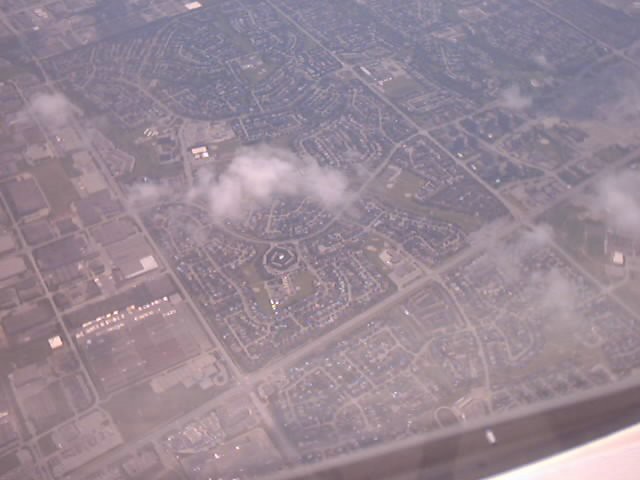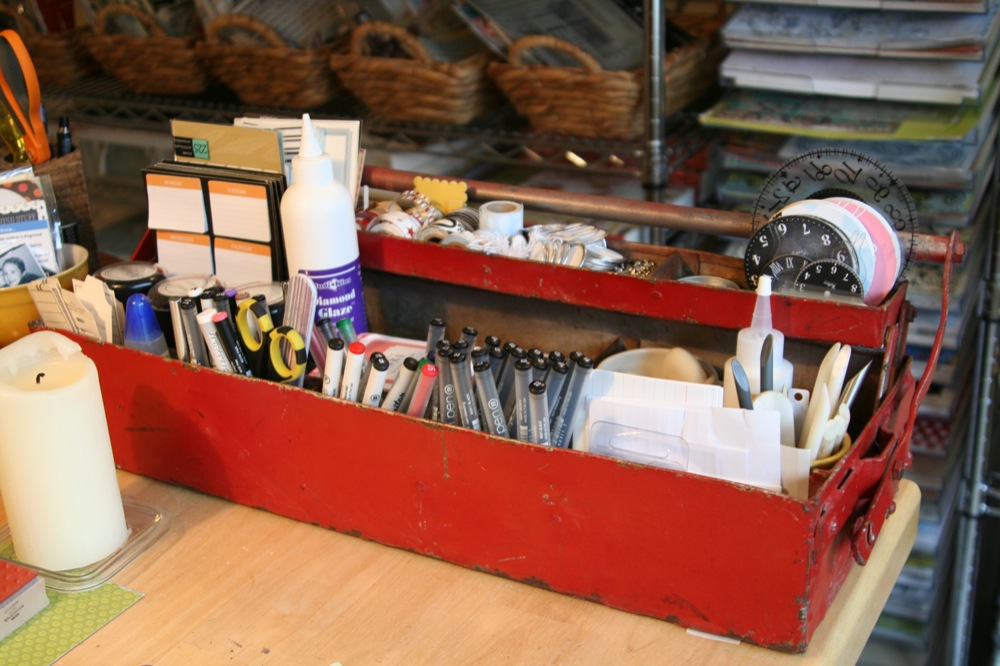Some people react to these ideas by going back to the land and building their off-grid self-sufficient-ish dream home on a rural acreage or hobby farm; a few go even farther in the direction of survivalism. It's an attractive strategy, and it's likely that we'll need to revive local rural economies and increase the number of small farms serving local customers if food insecurity is a consequence of shorter supply chains, particularly for perishable items, in an overpopulated post-peak-oil world.
Just maybe, being an engaged citizen living the slow life and advocating for sustainability in the suburbs will be the best way to make a difference.
 |
| Slow in the suburbs could mean much more than this. Via D.C.Atty on flikr. |
"The suburbs get a bad rap in the media, in rural feedlots, and at rooftop urban cocktail parties. Why? Because the ‘burbs contribute heavily to sprawl/encroachment, are prone to a sameness in architecture, and are equated with mediocrity when compared to sexy cities and bucolic rural towns. While we’re not ready to become suburban apologists – those problems above are real issues – we think it’s time we suburbanites explored how to make our lives in the ‘burbs richer, deeper and more meaningful."Well said! On a rapidly urbanizing planet, in a part of the world where about half of us choose to live in suburbs, exploring how we can live more thoughtful, sustainable lives in suburban neighborhoods could be incredibly valuable.
(Just to clarify, I'm using the definition of a suburb as a residential neighborhood of primarily single-family homes on separate building lots; the political independence of an exurb or demographic information about residents is not assumed, since those factors vary so wildly from place to place.)
 |
| A suburb of Toronto seen from the air, via modowd on flikr |
Most of the talk in urban planning circles prescribes increasing the density of cities, creating mixed-use neighborhoods with residential and commercial spaces side-by-side, and improving public transit and walkability (see the wiki on New Urbanism for more information on the prevalent approach). These are incredibly important strategies for rejuvenating the downtown core and inner-ring suburbs of North American cities. These neighborhoods were designed before or just after World War Two, before automotive use was commonplace, and so already have much of the infrastructure in place for a New Urbanist makeover.
However, applying these strategies to newer outer-ring suburbs (on the edges of cities) is going to be more difficult work, because newer suburbs generally were not designed to be dense, walkable, mixed-use areas to begin with (There are exceptions built in the past ten years, like the subdivision I live in, but they tend to form islands of walkability that aren't connected to other neighborhoods.). Residents of suburbs will probably need to lead the way by advocating for better public transit and active transportation infrastructure and better access to key service businesses, so that their neighborhoods become less car-dependent. Cities will need to rewrite public policy so that infill development is encouraged (and affordable, and family-friendly), businesses can be established on residential streets by converting houses into live-work spaces, and school boards halt the cycle of neglecting inner-city and inner-ring schools so they can build new schools on the outer edge of town to service new suburbs. If this opinion piece is correct, we should also question the planning-policy dogma that constantly building new homes on the edges of cities is a major economic stimulator.
Urban planners will also need to proceed carefully with infrastructure upgrades and building projects in the suburbs. There are many reasons about half of us choose to live in suburbs: the ability to have pets and gardens, the increased indoor and outdoor space, and our perceptions of safety, privacy, housing affordability, and financial stability. So, any infrastructure changes we make to suburban neighborhoods should keep the positive attributes of those neighborhoods intact; for instance, even a low-rise infill development could have implications for the microclimates of neighboring properties' gardens, exposure of solar panels, and privacy of their yards. We also need to remember that the greenest brick is the one that already exists; it's much more sustainable for us to find ways to retrofit or renovate existing homes and infrastructure than to tear it down or abandon it and start over. Even with these constraints, we'll find innovative ways to retrofit car-dependent structures (like empty strip malls and parking lots) to increase density and repurpose structures. Good examples of the sort of solutions we might consider can be found among the entries in the Reburbia design contest that Dwell and Inhabitat hosted in 2009.
 |
| A look at what's possible in a suburban backyard, via Earthworm on flikr |
- By supporting locally-owned small businesses in our neighborhoods, we help ensure that services remain available close by, so we aren't forced to drive to the big box district for day-to-day essentials. This is also better for the local economy, even if we shift only a fraction of our spending to local businesses. The same reasoning applies for supporting local farmers' markets and community-supported agriculture initiatives, so that local farmers can thrive and our local food security is increased.
- We can take a page from the urban homesteading movement (see my previous post for lots of links to resources) by growing at least a portion of our own food, in our own yards or in community gardens, using organic gardening and permaculture techniques, and pushing for carefully-crafted bylaws that allow backyard chickens and small livestock to be carefully kept on large suburban lots.
- By getting out of our cars and walking or riding our bicycles instead, we deepen our engagement with our neighborhoods and reduce our fossil fuel consumption. Figuring out how to bring bike networks to the burbs and make it easier to cycle there is going to be a key strategy for making our cities more sustainable and adapting as fuel becomes more scarce and expensive. Ideally, cities will have bicycle infrastructure not only for people who are commuting to daytime jobs, but also on-road sharrows and bike lanes, and separated paths on road margins or through parks, to connect with enough of the existing grocery-store-anchored strip malls to make them useful routes for suburban errand running. Better availability and affordability of practical bicycles designed to carry kids and cargo (like the Dutch bakfiets and Japanese mamachari) would also be a big step toward making bicycle use easier in the suburbs.
- We need to break the chain of thinking of our houses as disposable items that we can trade up for newer, bigger ones, as if they are cars (Currently, the average American homeowner moves or refinances every 5 to 7 years.). We should consider redesigning and renovating our homes to meet our needs, instead of moving to bigger spaces that are still poorly designed; and while we're renovating, we need to make our homes healthier to live in and more energy-efficient by carefully selecting replacement appliances, furniture, finishes, heating and cooling systems, insulation, and windows. If we can create home offices, studios, and workshops that allow us to work from home and reduce the time and energy we use commuting, so much the better.
- We can use the track record of existing schools, active community groups, mature landscaping and parks, walkable streets, older homes with character and charm, larger lot sizes, and location closer to the city core to promote living in mature communities to friends who might otherwise consider building a new house on the outer ring.
- Get involved! Join community groups who are working toward sustainability goals, organizing reskilling workshops, creating community gardens, holding green festivals and social bicycle rides, or just organizing social and cultural events where neighbors get to know each other.
So, tell me: what's missing from my list? How are you making your life in the suburbs slower, more local, or more eco-friendly?












